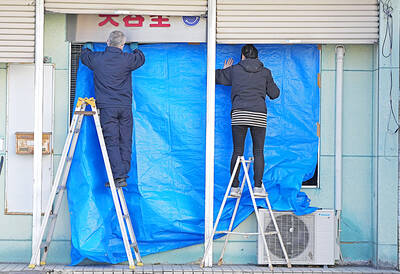A Taiwanese medical research team said that it has developed an index of five critical-risk factors used to predict the risk of developing liver cancer from hepatitis C in a five-to-5 year period.
Advancing Clinical Treatment of Liver Disease director and National Taiwan University Hospital Medical Department physician Kao Jia-horng (高嘉宏) said the prevalence of hepatitis C is about 4 percent in Taiwan — higher than in China, Japan, South Korea, New Zealand and Australia — with about 400,000 to 600,000 cases nationwide.
Hepatitis C is transmitted primarily by blood-to-blood contact, such as through unprotected sexual intercourse, tattoos, needle sharing, surgery, blood transfusion and acupuncture; and about 50 percent of patients with acute hepatitis C develop a chronic infection, he said.
If hepatitis C patients develop cirrhosis of the liver, about 30 percent are likely to suffer from hepatic failure within 10 years, and about 1 to 4 percent develop liver cancer every year, Kao said.
There is no vaccine for hepatitis C, Kao added.
The research team conducted a follow-up study on 1,095 hepatitis C patients over 15 years and identified five factors that contribute a patients’ risk of developing liver cancer — age, liver function index (alanine aminotransferase, ALT), virus genotype, viral load and the degree of liver fibrosis.
Team member and assistant professor at National Yang Ming University Institute of Clinical Medicine Lee Mei-hsuan (李美璇) said patients above 40 years of age, with higher ALT and hepatitis C viral load, more severe liver fibrosis and genotype 1 face greater risk of developing liver cancer and that the index model has a precision of about 70 percent.
The degree of liver fibrosis has the highest association with the risks of developing liver cancer, she said, adding that hepatitis C can be treated and cured, especially with new oral medicines developed to reduce viral load and slow the development of liver fibrosis, but patients are advised to make follow-up visits to doctors regularly.

Taiwanese were praised for their composure after a video filmed by Taiwanese tourists capturing the moment a magnitude 7.5 earthquake struck Japan’s Aomori Prefecture went viral on social media. The video shows a hotel room shaking violently amid Monday’s quake, with objects falling to the ground. Two Taiwanese began filming with their mobile phones, while two others held the sides of a TV to prevent it from falling. When the shaking stopped, the pair calmly took down the TV and laid it flat on a tatami mat, the video shows. The video also captured the group talking about the safety of their companions bathing

US climber Alex Honnold is to attempt to scale Taipei 101 without a rope and harness in a live Netflix special on Jan. 24, the streaming platform announced on Wednesday. Accounting for the time difference, the two-hour broadcast of Honnold’s climb, called Skyscraper Live, is to air on Jan. 23 in the US, Netflix said in a statement. Honnold, 40, was the first person ever to free solo climb the 900m El Capitan rock formation in Yosemite National Park — a feat that was recorded and later made into the 2018 documentary film Free Solo. Netflix previewed Skyscraper Live in October, after videos

Starting on Jan. 1, YouBike riders must have insurance to use the service, and a six-month trial of NT$5 coupons under certain conditions would be implemented to balance bike shortages, a joint statement from transportation departments across Taipei, New Taipei City and Taoyuan announced yesterday. The rental bike system operator said that coupons would be offered to riders to rent bikes from full stations, for riders who take out an electric-assisted bike from a full station, and for riders who return a bike to an empty station. All riders with YouBike accounts are automatically eligible for the program, and each membership account

A classified Pentagon-produced, multiyear assessment — the Overmatch brief — highlighted unreported Chinese capabilities to destroy US military assets and identified US supply chain choke points, painting a disturbing picture of waning US military might, a New York Times editorial published on Monday said. US Secretary of Defense Pete Hegseth’s comments in November last year that “we lose every time” in Pentagon-conducted war games pitting the US against China further highlighted the uncertainty about the US’ capability to intervene in the event of a Chinese invasion of Taiwan. “It shows the Pentagon’s overreliance on expensive, vulnerable weapons as adversaries field cheap, technologically